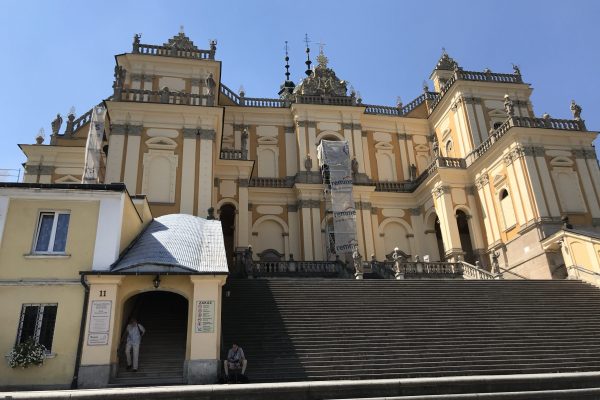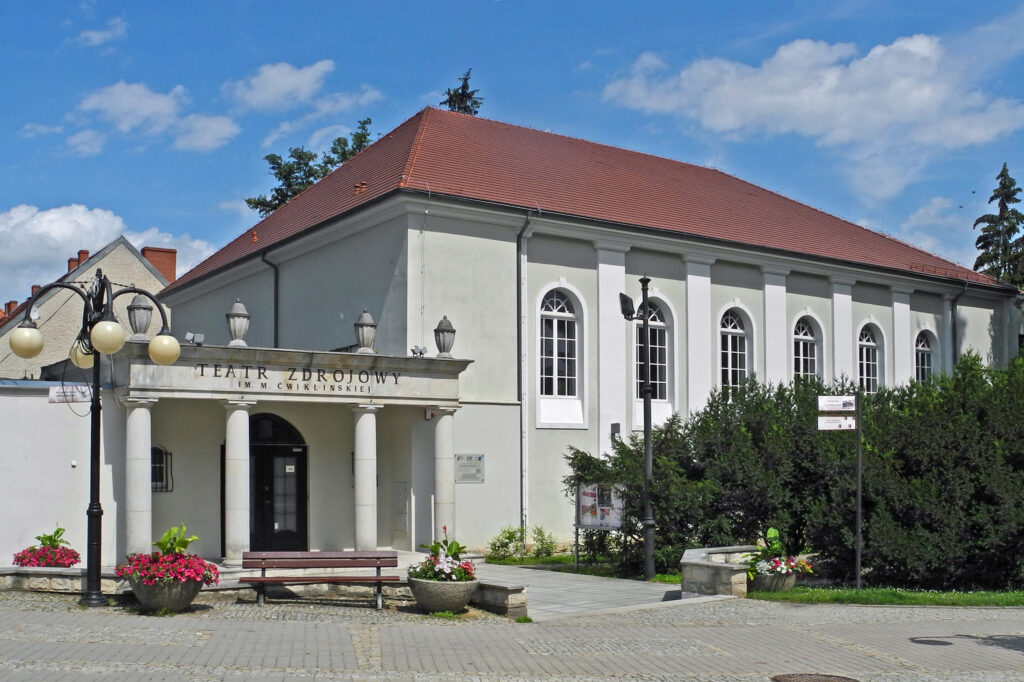Experience the Culture and History of the Kłodzko Valley
Immerse yourself in living history. Kłodzko has a lot to offer in terms of history: From romantic castles to theaters and impressive churches. And last but not least, the cities are true cultural treasure troves.
Książ Castle

The number one tourist attraction in Lower Silesia. It is one of the largest castles in Europe and also the third largest castle in Poland. Walks on beautiful terraces make every romantic heart beat faster and the high tower reminds of those days when people still dreamed of becoming princesses. Visitors can also learn the enchanting story of the beautiful and unhappy mistress of the castle, Daisy of Pless. Visitors can also walk through underground tunnels that were supposed to lead to Hitler’s quarters.
More about: Książ Castle in Wałbrzych (70,6 km distance)
Nassau Castle

The Kamieniec Ząbkowicki Palace is the romantic castle of the former greatest scandalist of the time – Princess Marianne of Orange-Nassau. The beautiful and spirited Marianne had a gigantic residence, built with four towers and larger terraces than the present residential quarters. In addition, she wanted a park with “waterworks.” But she only enjoyed her new home for a short time, as she became pregnant by her long-married head groom, gave birth to the child, abandoned her prince consort and went off into the wide world.
More about: Nassau Castle (30,7 km)
The Kłodzko Fortress

The Kłodzko Fortress impresses with its high level of preservation and is a masterpiece of defensive architecture from the 17th century. It originated from a Bohemian castle, a border fortress, which served as a defense. During the war, which lasted seven years, the fortress gained great importance when it was recaptured by the imperial campaign master. In 1877 it was abolished and until 1938 the fortress served as a prison. During the World War II, the main fortress was given to an armament factory.
Today the fortress is one of the most important tourist attractions in the region.
Holy Trinity Church of Peace in Świdnica (UNESCO)

The Lutheran Peace Church in Silesia is one of the most valuable monuments in Lower Silesia. Together with the other surviving Peace Church in Jauer, it was included in the prestigious UNESCO World Heritage list. Its construction was directly related to the end of the so-called the Thirty Years War and the conclusion of the Peace of Westphalia. The Catholic emperor, Ferdinand III. Habsburg, agreed to build three Protestant churches in the Protestant Silesian principality. However, they had to be made of non-permanent materials: Wood, straw, sand and clay.
More about: Church of Peace in Świdnica (57.2 km distance)
Basilica of the Visitation of Our Lady in Wambierzyce

The Basilica of the Visitation of the Virgin Mary is a Baroque building in Wambierzyce in the Kłodzko district, built in 1715 – 1723. According to a chronicle, in the 13th century a blind man regained his sight in this place. Several churches were built as a result. The temple of Count Franciszek Antoni von Goetzen, which Pope Pius XI conferred the title “Basilica minor” on in 1936, has survived to this day.
The impressively large facade is 52.5m high. Monumental stone staircases with three sides lead to the church. There are 56 stairs in total, of which the 33 in the middle row represent the years of Jesus’ life.
More about: Basilica of the Visitation of Mary in Wambierzyce (16.6 km distance)
Kurtheater & Park in Polanica-Zdrój

Next stop: Spa Theater in Polanica-Zdrój. The theater combines language, music, visual arts, media, dance, etc. GB Shaw said, “We use a mirror to see our face. We need art to see our soul.” The Spa Theater in Polanica-Zdrój is not only a theater but also a centre of culture and promotion of the city.
The building was erected in 1925 and is almost a hundred years old. The theater itself is named after a great artist of the Polish stage – Mieczysława Ćwiklińska. She was a film and theater actress as well as a singer.
More about: Kurtheater in Polanica-Zdrój (5.6 km distance)
Wrocław (Breslau)

Wrocław is the historical capital of Lower Silesia as well as the whole of Silesia. The tourist heart of Wroclaw is the Market Square, also known as “the Great Ring”. It is one of the largest medieval marketplaces in Europe.
There are many historic homes in the Market Square, and the Old Town Hall in Wrocław is impressive. Inside the Old Town Hall is the city’s muserum. There are many different types of restaurants and cafés in the market.
Right next to the Market Square is the Salt Square, where you can find many flower stalls. This square was marked in the middle of the 13th century together with the main square.
More about: Wrocław (100 km distance)
Vang Stave Church

From the 12th century until 1841, the Vang Stave Church stood in the southern Norwegian town of Vang. After the church was ordered to be demolished, the Norwegian painter Johan Christian Clausen Dahl bought it. He managed to get it purchased by the Prussian king. Dahl’s student dismantled the church and transferred it to Berlin. In the spring of 1842, on the initiative of Countess Friederike von Reden, it was moved to Karpacz in the Krkonoše Mountains below the Schneekoppe. On July 28, 1844, the solemn opening and consecration took place in the presence of the Prussian king. The free-standing bell tower is new and was designed by the architect Friedrich August Stüler. After the countess’s death, he placed a memorial plaque next to the church in her honour.
More about: Wang stave church in Karpacz (108 km distance)
Museum of Local History & Kłodzko

The old town in Kłodzko has its charm. Worth seeing is the 13th century bridge over Młynówka, which is a copy of the famous Charles Bridge in Prague.
Under the oldest part of the town runs the interesting underground tourist route of Poland’s 1000th anniversary. It is a complex of tunnels, created in times when the city could not develop on the surface, as it was limited by the river. During the war, these premises served as hiding places.
Another place of interest in Kłodzko is the Museum of Local History with many cultural objects of the region that are worth seeing.
More about: Museum of local history Kłodzko (9.2 km distance)

